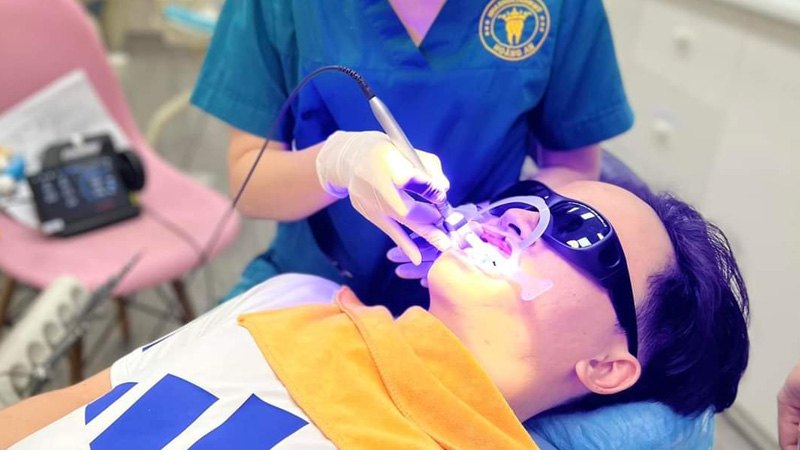
Lasers are tubes that use powerful, pinpointed light beams of thermal energy to perform multiple tasks during gum surgery. Lasers can:
cut and remove diseased tissue
coagulate blood vessels to form solid clots
kill germs and bacteria
sterilize the area
Lasers work by creating an energy change in atoms. The laser light shifts atoms from their current resting state to a stage known as the excited state. This causes the atoms to produce energy called spontaneous emission.
When the atoms return to a resting state, they emit particles of light called photons. This process provides the energy needed to perform certain functions, such as cutting tissue without the use of a blade.
Here’s what you can expect for laser gum surgery:
1.Your periodontist will place the fiber optic tip of the laser at the top of the periodontal pocket. The laser is about the size of three human hairs.
2.The laser will use pinpointed light to remove diseased and inflamed gum tissue from the pocket. (The laser is designed to only remove diseased tissue. It does not remove or damage healthy gum tissue. The laser also removes disease-causing germs and bacteria from the periodontal pocket.)
3.Once the pocket is cleaned of damaged tissue and bacteria, the laser is set aside.
4.Your periodontist then uses an ultrasonic cleaning tool to break apart and remove tartar and calcifications with sound waves.
5.The laser is reintroduced into the pocket to deep clean the bottom and eliminate telltale debris.
6.The laser also sterilizes tissue and bone, and stimulates formation of a blood clot. The blood clot speeds healing and helps gum tissue reattach to the tooth. This eliminates the need for stitches.
If you’re having your entire mouth done, you may need two visits that last 1 to 2 hours each.
Here’s what you can expect for gummy smile surgery:
1.If inflammation or infection is causing excess gum tissue, your periodontist’s first step will be a scaling and root planing procedure.
2.Then, a laser procedure can sculpt and contour the gums. A periodontist or an orthodontist can do this.
3.During the procedure, a soft tissue laser will remove excess gum tissue.
4.The laser will also cauterize the tissue. This helps reduce bleeding and postsurgical discomfort.
Your dental specialist may also use the laser to reshape the underlying jawbone.
Laser gum surgery can be done on the gums in any quadrant of the mouth. The lasers used for this purpose are designed to treat soft tissue.
Laser surgeries can also be done on and in teeth. These procedures use different types of lasers that are designed to treat hard tissue.
There are many types of lasers, and none of them are one-size-fits-all.
Lasers rely on varying wavelengths and power levels. Using the wrong laser can damage gum tissue. For this reason, it’s important to see a professional who has been trained in laser treatments.
Other possible complications may include:
infection
scarring
permanent tissue color change
Because the laser sterilizes the area, infection is not common. However, call your dental professional immediately if you notice any signs of infection. These include:
swelling
oozing
worsening pain
Fever
Some people resume their normal activities the day following surgery. Others may take a few days to feel completely up to speed.
You can expect to feel mild soreness for several days. Other temporary side effects include:
slight bleeding
minor swelling
discoloration of gum tissue
Aftercare instructions might include the following:
The healing process generally lasts a week. During that time, your periodontist may recommend you:
not brush or floss the affected area
rinse your mouth and let the water or mouthwash fall out gently instead of rinsing and spitting
eat a soft diet
abstain from using nicotine products such as cigarettes
In the first 1 to 2 days, your periodontist may recommend you rinse your mouth every few hours with warm salt water to help soothe your mouth. Mix 1/2 teaspoon of salt in 8 ounces of water. Make sure the water isn’t too hot or cold.
Laser surgery can decrease gum disease. However, to keep your mouth clean and free from infection, you must maintain good oral hygiene habits. These include:
daily brushing and flossing
seeing a dentist twice a year for preventive care and cleaning